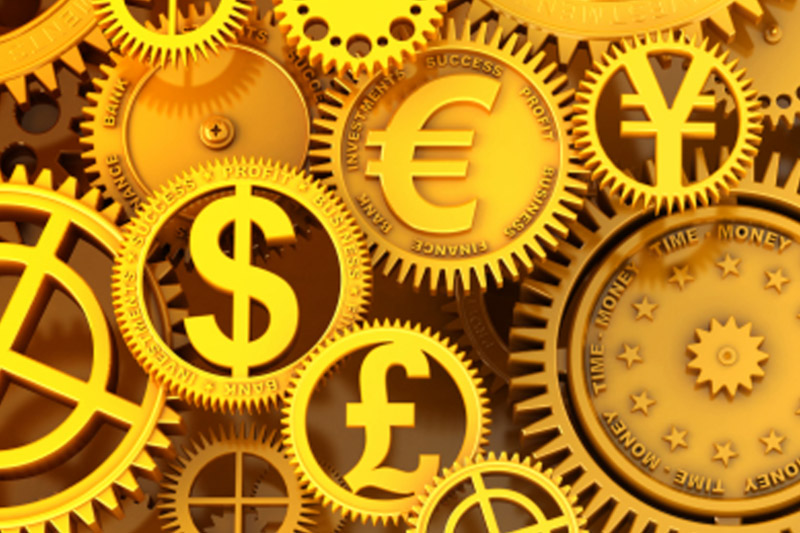Investing.com - The dollar was trading at two-and-a-half year highs against the yen on Wednesday as expectations for more aggressive easing by the Bank of Japan continued to weigh on the yen and was lower against the euro ahead of Thursday’s European Central Bank meeting.
During European morning trade, the dollar was close to its highest level against the yen since mid-May 2010, with USD/JPY rising 0.19% to 93.79.
BoJ Governor Masaaki Shirakawa said Tuesday that he was stepping down three weeks before the conclusion of his five year term on April 8, along with his two deputy governors.
The move is likely to push forward a transition towards more aggressive monetary easing, amid ongoing pressure from Prime Minister Shinzo Abe to step up measures to combat deflation.
Prime Minister Abe is expected to nominate a new governor later this month.
The greenback was higher against the euro, with EUR/USD down 0.42% to 1.3524.
The single currency remained somewhat supported after data on Wednesday showed that the euro zone’s services purchasing managers’ index improved to a 10-month high in January, but the report showed that the gap between Germany and France widened.
The ECB was widely expected to keep rates unchanged at 0.75% on Thursday, while a post-policy meeting press conference by President Mario Draghi would be closely watched for indications on the future direction of monetary policy.
The greenback was hovering just below five-month highs against the pound, with GBP/USD dipping 0.01% to 1.5658.
The pound remained under pressure as a combination of concerns over the faltering economy and the risk of the U.K. losing its triple-A sovereign rating undermined investor confidence in sterling.
Elsewhere, the greenback pushed higher against the Swiss franc, with USD/CHF rising 0.48% to 0.9126.
The greenback was broadly higher against its Canadian, Australian and New Zealand counterparts, with USD/CAD easing up 0.14% to 0.9969, AUD/USD dropping 0.79% to 1.0307 and NZD/USD falling 0.46% to 0.8411.
The Australian dollar was sharply lower after official data showed that Australian retail sales fell 0.2% in December, compared to expectations for a 0.3% increase. The weak data added to the view that the Reserve Bank of Australia may cut interest rates further in the coming months.
The dollar index, which tracks the performance of the greenback versus a basket of six other major currencies, was up 0.28% to 79.80.
Germany was to release official data on factory orders later in the session.
During European morning trade, the dollar was close to its highest level against the yen since mid-May 2010, with USD/JPY rising 0.19% to 93.79.
BoJ Governor Masaaki Shirakawa said Tuesday that he was stepping down three weeks before the conclusion of his five year term on April 8, along with his two deputy governors.
The move is likely to push forward a transition towards more aggressive monetary easing, amid ongoing pressure from Prime Minister Shinzo Abe to step up measures to combat deflation.
Prime Minister Abe is expected to nominate a new governor later this month.
The greenback was higher against the euro, with EUR/USD down 0.42% to 1.3524.
The single currency remained somewhat supported after data on Wednesday showed that the euro zone’s services purchasing managers’ index improved to a 10-month high in January, but the report showed that the gap between Germany and France widened.
The ECB was widely expected to keep rates unchanged at 0.75% on Thursday, while a post-policy meeting press conference by President Mario Draghi would be closely watched for indications on the future direction of monetary policy.
The greenback was hovering just below five-month highs against the pound, with GBP/USD dipping 0.01% to 1.5658.
The pound remained under pressure as a combination of concerns over the faltering economy and the risk of the U.K. losing its triple-A sovereign rating undermined investor confidence in sterling.
Elsewhere, the greenback pushed higher against the Swiss franc, with USD/CHF rising 0.48% to 0.9126.
The greenback was broadly higher against its Canadian, Australian and New Zealand counterparts, with USD/CAD easing up 0.14% to 0.9969, AUD/USD dropping 0.79% to 1.0307 and NZD/USD falling 0.46% to 0.8411.
The Australian dollar was sharply lower after official data showed that Australian retail sales fell 0.2% in December, compared to expectations for a 0.3% increase. The weak data added to the view that the Reserve Bank of Australia may cut interest rates further in the coming months.
The dollar index, which tracks the performance of the greenback versus a basket of six other major currencies, was up 0.28% to 79.80.
Germany was to release official data on factory orders later in the session.
